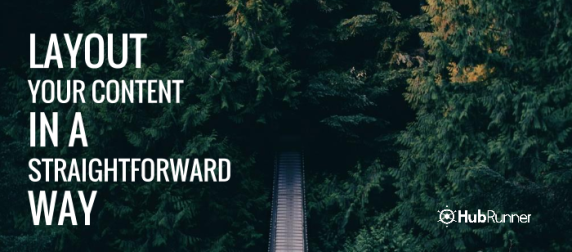The Basics of a Content Management System Layout
Content management systems are exceptionally hot web trends at the moment due to the unprecedented success of WordPress based websites.
Not only do these sites tap into the desire for flat design sites, but they also allow non-technical users to design websites with easy navigation options while indexing content without the need for fiddly code.
It’s essential, therefore, that you learn how to get grips with what a content management system layout looks like in order to give a sense of modernism to your blogs, e-commerce sites, and business portals, so let’s take a look at the basics.
Header
One of the most important aspects of a content management system layout is the header.
You see, the header delivers the first visual impression of your site and gives visitors the opportunity to say “yay” or “nay” when it comes to engaging with your site and scrolling down instead of hitting the back button.
This decision is made in just a few seconds, so how do you ensure your header hooks visitors in and keeps them on site for longer?
Your main aim should be to keep the header simple and to the point. Visitors want to know exactly what the site’s about without too much thought processing. Time is valuable online today, so you want your sites ethos communicated as quickly as possible with no doubts lingering in the background.

Horizontal Menu Bars
The key to a successful website in the 21st century is achieving clear navigation of your content and this can be achieved by integrating horizontal menu bars into your content management system layout.
But why are horizontal menu bars such a crucial design element for content management systems? Well, let’s take a look:
- Keeps important content above the fold which promotes easy navigation to your most engaging content without the need to scroll down
- Reduces clutter in the sidebars of your site and allows for more content to be displayed in the main area of the site
- Quite simply, it provides a slick navigation experience for users by combining simplicity with a professional look
Content
Content management systems are just perfect for all manner of websites be it trying to sell products, promote a band or even just help to project a point of view.
And when it comes to a content management system layout then you want to deliver your content in the middle of your site, just below the horizontal navigation menu.
This is made very easy when designing sites through a content management system as they will almost always serve up the content in its optimal position. All you have to do is fill the ‘entries’ (essentially textboxes) with your content and you’re good to go.
Footer
The final part of a content management system layout that needs vital attention paying to it is the humble footer.
Now, many people discount a footer as a trivial aspect of content management systems, but they’re actually powerful focal points which can aid navigation and help deliver useful information to your visitors.
The type of information you should be looking to serve up in the footer includes:
- An ‘About Us’ section which details the basics of your company and proves they’re not just a faceless organization
- The opportunity to ‘Contact Us’ as modern web users intuitively know to head to the footer to find contact details
- A ‘Privacy Policy’ to help explain how you will take user’s data and implement it into your service which is a growing concern in this day and age
As with most aspects of contemporary web design, simplicity is the key to a successful content management system layout. By concentrating on the four aspects above you should find that your website is able to draw in more visitors and keep them on page for longer.



Comments are closed.